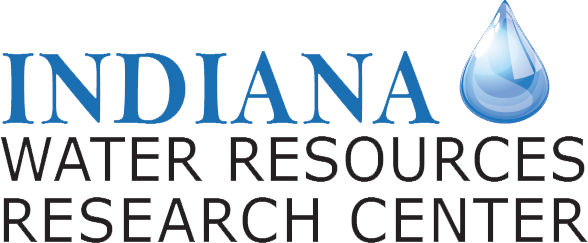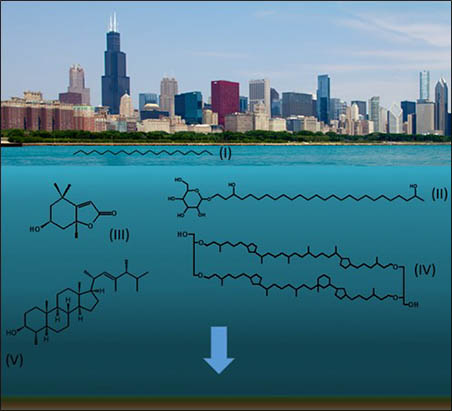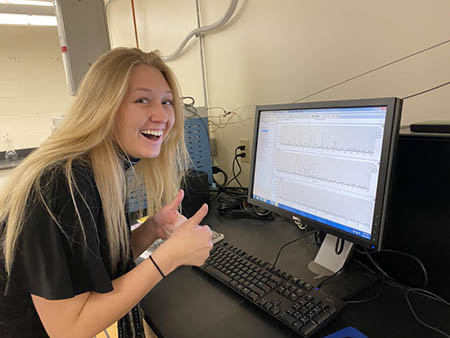Factsheet – Using Sedimentary Lipid Biomarkers to Track Historical Changes to Lake Michigan
A research project funded by the Indiana Water Resources Research Center through the U.S. Geological Survey’s 104B annual base grants (section 104 of the Water Resources Research Act of 1984, as amended).

Start Date: 2019-05-31
End Date: 2020-05-30
Total Federal Funds: $15,000
Total Non-Federal Funds: $45,000
Freshwater aquatic communities of Lake Michigan are faced with a wide array of environmental stressors that are likely to increase in the coming century, including invasive species, nutrient loading, and climate change. The numbers of species, community structure, and range of organisms will be altered as water quality, temperature, clarity, seasonal and annual water availability, and nutrient loading all differ from present conditions. However, significant uncertainty remains in how aquatic communities are impacted by disturbance over longer periods of time and how recovery of these communities progresses. Historical trends reconstructed from sediments can inform our management strategies as we learn of aquatic ecosystem response to disturbance and shifting community dynamics associated with recovery.
This project used organic biomarkers preserved in the sediments of Lake Michigan to reconstruct aquatic communities, water temperature, and hydroclimate helping us better predict the magnitude and extent of ecosystem response to various threats and timing of recovery, and thus better prepare us for future climate and development scenarios in Lake Michigan.
Research Objectives
1. Identify and quantify aquatic community changes and synchronous climate changes (temperature and hydroclimate) preserved in the sediments of Lake Michigan from previously recovered cores.
2. Estimate potential changes in nutrients from humans or animals by looking at the presence, abundance, and source of fecal contamination in sediments. Data collected for aquatic community variability, fecal contamination, temperature, and hydroclimate were compared to other records, such as lake level changes. These analyses will help determine how environmental and climatic changes in Lake Michigan have affected the aquatic ecosystem for the last 500 years, such as the loss or increase of aquatic communities with changing temperatures, precipitation and soil runoff, and nutrients.

Example aquatic biomarkers of Lake Michigan: (I) C21 n-alkane (aquatic algae), (II) 1-(Ohexose)-3,25-hexacosanediol (Cyanobacteria), (III) loliolide (diatoms), (IV) crenarchaeol (Thaumarchaeota), and (V) dinosterol (dinoflagellates).
Researcher Profile

Major Conclusions & Significance

University of Notre Dame Ph.D. student Audrey Taylor using the gas chromatograph to analyze sediment samples.
What Does This Mean For Indiana?



